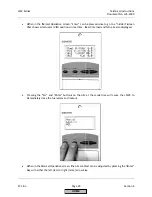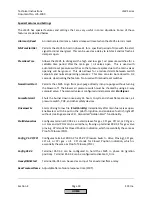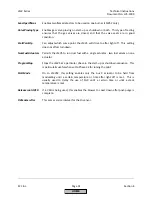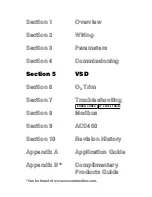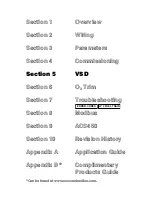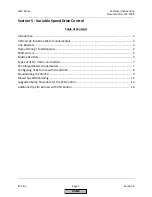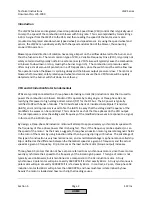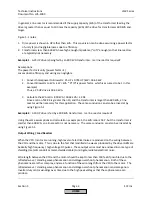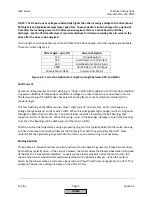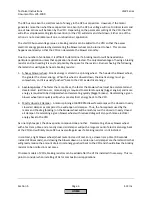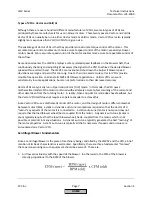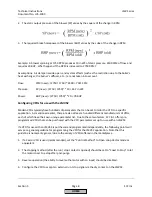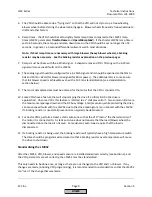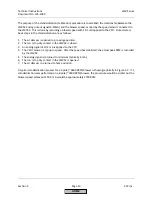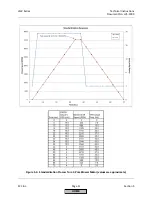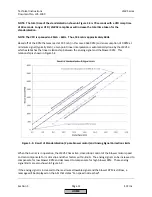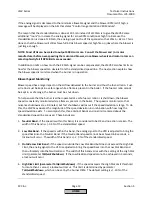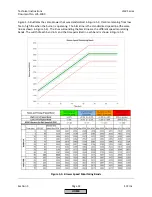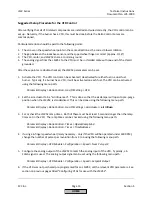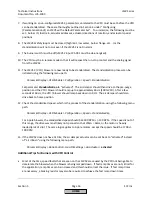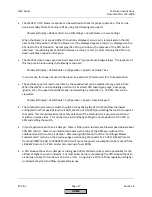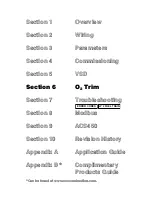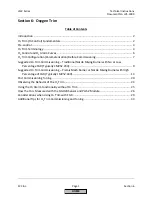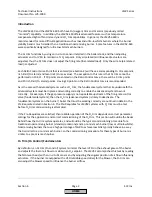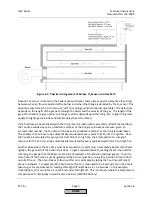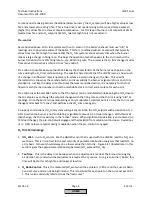
LMV
Series
Technical
Instructions
Document
No.
LV5
‐
1000
SCC
Inc.
Page
9
Section
5
5.
The
VFD
should
be
able
to
do
a
"flying
start"
so
that
the
VFD
will
not
try
to
stop
a
free
‐
wheeling
blower
wheel
before
starting
the
wheel
spinning
again.
Blower
wheels
frequently
free
‐
wheel
due
to
draft
and
other
factors.
6.
Ramp
times
‐
the
VFD
should
be
set
to
slightly
faster
ramp
times
compared
to
the
LMV52
ramp
times
(LMV52
parameters
TimeNoFlame
and
OperatRampMod
).
If
the
shorter
LMV52
ramp
time
is
set
to
60
seconds,
the
ramp
up
and
ramp
down
times
in
the
VFD
should
be
set
no
longer
than
55
seconds.
In
general,
a
5
second
differential
will
work
well
in
most
situations.
Note:
If
short
ramp
times
are
necessary
with
large
blowers
(heavy
blower
wheels),
a
braking
resistor
may
be
necessary.
See
the
braking
resistor
explanation
on
the
previous
pages.
7.
Ramps
must
be
linear
with
the
4
‐
20mA
signal.
S
‐
shaped
ramps
and
PID
/
filtering
on
the
4
‐
20mA
signal
will
cause
speed
faults
on
the
LMV52.
8.
The
analog
signal
should
be
configured
for
a
4
‐
20mA
signal
and
it
should
be
spanned
so
that
4mA
=
0Hz
and
20mA
=
62Hz
(for
blowers
designed
for
60
Hz
power).
The
additional
2Hz
is
to
make
sure
that
full
blower
speed
is
achievable
even
with
a
19.5
mA
standardization
(see
standardization
section
below).
9.
The
motor
nameplate
data
must
be
entered
for
the
motor
that
the
VFD
is
connected
to.
10.
Some
VFDs
have
a
feature
that
will
stop
ramping
the
drive
if
a
critical
limit
in
the
drive
is
approached.
On
some
VFDs,
this
feature
is
referred
to
as
"stall
prevention".
Two
common
limits
are
the
maximum
amperage
drawn
and
the
DC
bus
voltage.
Stall
prevention,
while
protecting
the
drive,
can
cause
speed
faults
with
the
LMV52
due
to
the
drive
ceasing
to
ramp
in
concert
with
the
LMV52.
If
a
braking
resistor
is
used,
stall
prevention
can
typically
be
deactivated.
11.
For
Vector
VFDs,
perform
at
least
a
static
auto
‐
tune
so
that
the
VFD
"learns"
the
characteristics
of
the
motor
it
is
connected
to.
A
static
auto
‐
tune
does
not
require
that
the
load
(blower
wheel)
be
disconnected
since
the
load
is
not
spun.
Some
dynamic
auto
‐
tunes
require
that
the
load
is
disconnected.
12.
If
a
braking
resistor
is
being
used,
the
braking
resistor
will
typically
have
a
high
temperature
switch.
The
drive
should
be
programmed
and
wired
so
that
a
braking
resistor
over
temperature
will
cause
the
drive
to
shut
down.
Standardizing
the
LMV52
After
the
LMV52,
VFD,
blower,
and
speed
sensor
are
installed
and
wired
correctly
(see
Section
2),
and
the
VFD
parameters
are
set
correctly,
the
LMV52
must
be
standardized.
This
only
needs
to
be
done
once,
as
long
as
there
are
not
changes
to
the
VFD
and
/
or
blower.
If
any
changes
are
made
(including
VFD
programming),
it
is
recommended
to
re
‐
standardize
so
that
the
LMV52
can
"learn"
the
change
that
was
made.
HOME
Summary of Contents for LMV 5 Series
Page 2: ...Intentionally Left Blank ...
Page 41: ...LMV Series Technical Instructions Document No LV5 1000 SCC Inc Page 7 Section 2 HOME ...
Page 42: ...Technical Instructions LMV Series Document No LV5 1000 Section 2 Page 8 SCC Inc HOME ...
Page 43: ...LMV Series Technical Instructions Document No LV5 1000 SCC Inc Page 9 Section 2 HOME ...
Page 44: ...Technical Instructions LMV Series Document No LV5 1000 Section 2 Page 10 SCC Inc HOME ...
Page 45: ...LMV Series Technical Instructions Document No LV5 1000 SCC Inc Page 11 Section 2 HOME ...
Page 46: ...Technical Instructions LMV Series Document No LV5 1000 Section 2 Page 12 SCC Inc HOME ...
Page 47: ...LMV Series Technical Instructions Document No LV5 1000 SCC Inc Page 13 Section 2 HOME ...
Page 48: ...Technical Instructions LMV Series Document No LV5 1000 Section 2 Page 14 SCC Inc HOME ...
Page 49: ...LMV Series Technical Instructions Document No LV5 1000 SCC Inc Page 15 Section 2 HOME ...
Page 50: ...Technical Instructions LMV Series Document No LV5 1000 Section 2 Page 16 SCC Inc HOME ...
Page 51: ...LMV Series Technical Instructions Document No LV5 1000 SCC Inc Page 17 Section 2 HOME ...
Page 52: ...Technical Instructions LMV Series Document No LV5 1000 Section 2 Page 18 SCC Inc HOME ...
Page 53: ...LMV Series Technical Instructions Document No LV5 1000 SCC Inc Page 19 Section 2 HOME ...
Page 54: ...Technical Instructions LMV Series Document No LV5 1000 Section 2 Page 20 SCC Inc HOME ...
Page 55: ...LMV Series Technical Instructions Document No LV5 1000 SCC Inc Page 21 Section 2 HOME ...
Page 373: ...Intentionally Left Blank ...

